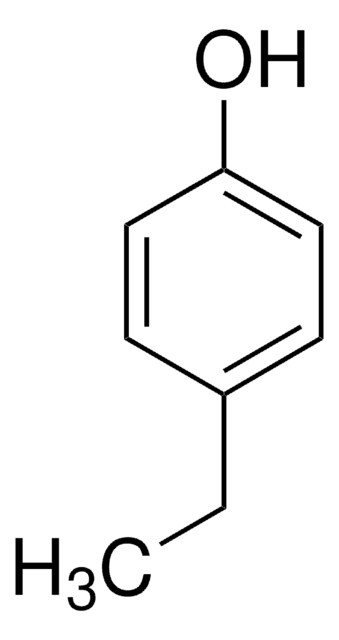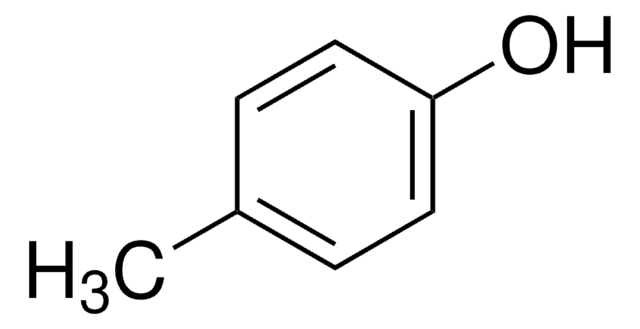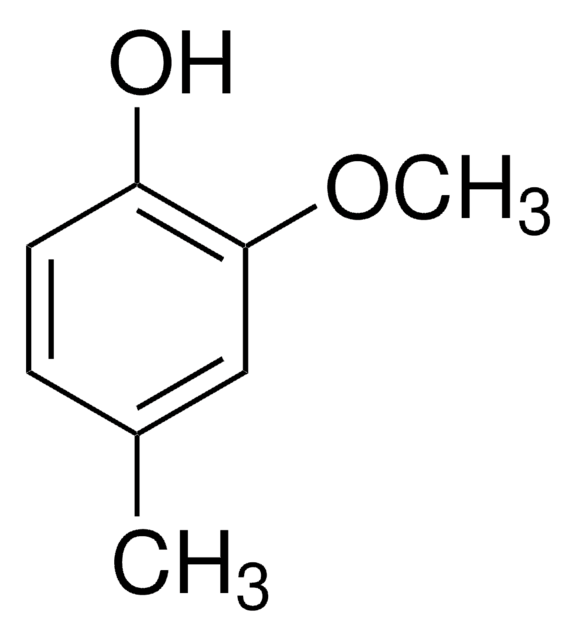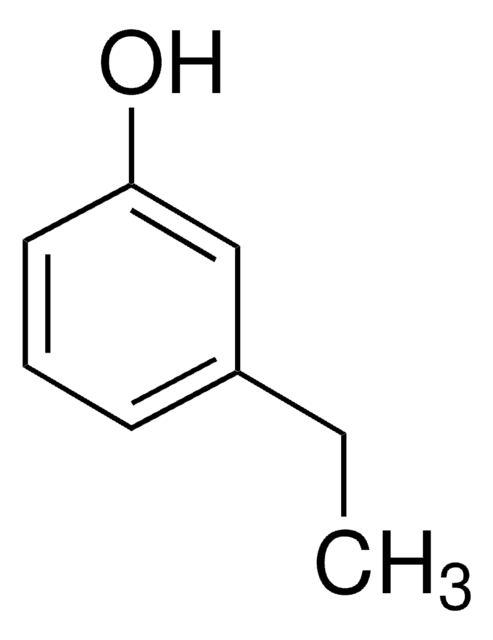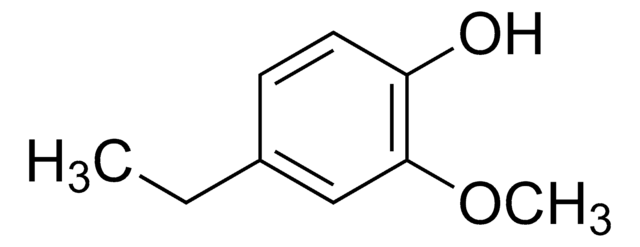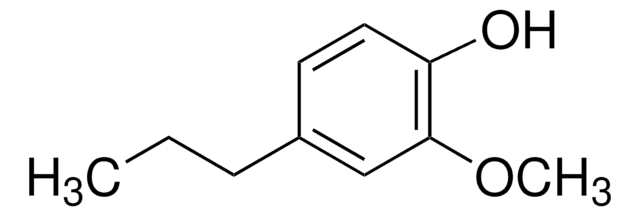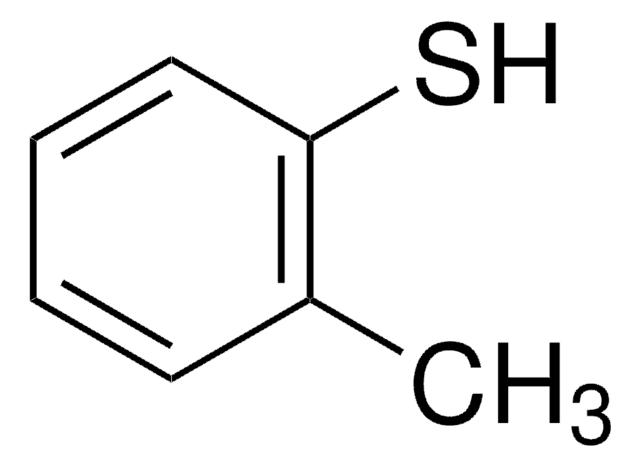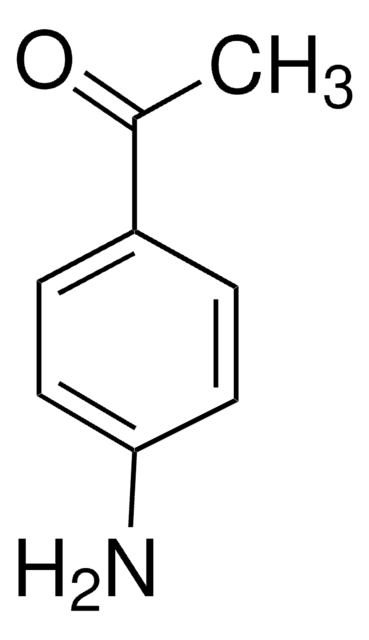W315605
4-Ethylphenol
≥98%, FG
Synonyme(s) :
1-ethyl-4-hydroxybenzene, 4-hydroxyphenyl ethane, p-ethylphenol
About This Item
Fragrance grade
Halal
Kosher
Produits recommandés
Source biologique
synthetic
Niveau de qualité
Qualité
FG
Fragrance grade
Halal
Kosher
Agence
follows IFRA guidelines
Conformité réglementaire
EU Regulation 1223/2009
EU Regulation 1334/2008 & 872/2012
Densité de vapeur
4.2 (vs air)
Pression de vapeur
0.13 mmHg ( 20 °C)
Essai
≥98%
pb
218-219 °C (lit.)
Pf
40-42 °C (lit.)
Application(s)
flavors and fragrances
Documentation
see Safety & Documentation for available documents
Allergène alimentaire
no known allergens
Allergène de parfum
no known allergens
Propriétés organoleptiques
smoky; phenolic
Chaîne SMILES
CCc1ccc(O)cc1
InChI
1S/C8H10O/c1-2-7-3-5-8(9)6-4-7/h3-6,9H,2H2,1H3
Clé InChI
HXDOZKJGKXYMEW-UHFFFAOYSA-N
Vous recherchez des produits similaires ? Visite Guide de comparaison des produits
Description générale
Application
- Sorption Behavior of Volatile Phenols at the Oak Wood/Wine Interface in a Model System.: This research explores the interaction between 4-ethylphenol and oak wood in wine aging, contributing to the understanding of volatile phenol adsorption and its impact on wine flavor (Barrera-García et al., 2006).
Mention d'avertissement
Danger
Mentions de danger
Conseils de prudence
Classification des risques
Eye Dam. 1
Code de la classe de stockage
11 - Combustible Solids
Classe de danger pour l'eau (WGK)
WGK 1
Point d'éclair (°F)
212.0 °F - closed cup
Point d'éclair (°C)
100 °C - closed cup
Équipement de protection individuelle
dust mask type N95 (US), Eyeshields, Gloves
Faites votre choix parmi les versions les plus récentes :
Déjà en possession de ce produit ?
Retrouvez la documentation relative aux produits que vous avez récemment achetés dans la Bibliothèque de documents.
Les clients ont également consulté
Notre équipe de scientifiques dispose d'une expérience dans tous les secteurs de la recherche, notamment en sciences de la vie, science des matériaux, synthèse chimique, chromatographie, analyse et dans de nombreux autres domaines..
Contacter notre Service technique